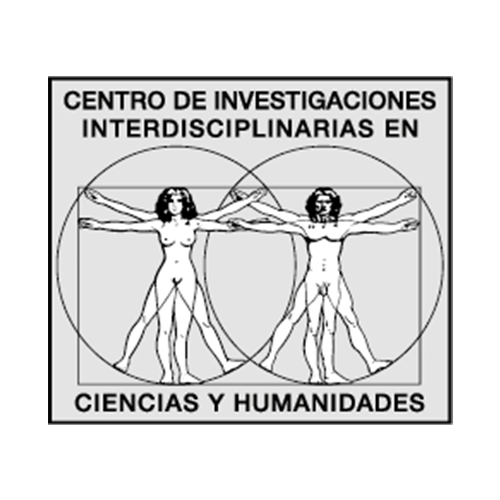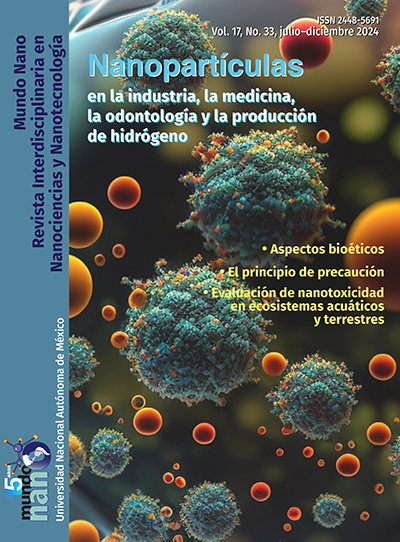Photocatalytic hydrogen production using metal nanoparticle-modified semiconductors
Main Article Content
Abstract
This review paper focuses on photocatalytic hydrogen production using sacrificial agents and semiconductors modified with metal nanoparticles. While the use of sacrificial agents reduces the energy required for hydrogen production and eliminates the recombination of photogenerated holes, the surface modification of semiconductors with metal nanoparticles changes the flow of photoinduced charge carriers, decreasing the recombination of electron-hole pairs and increasing the number of catalytic active sites for reduction. In addition, the impact of electrochemical and photoelectrochemical techniques on the characterization of the photocatalysts, the semiconductor/electrolyte interface, and the modification of the Fermi level when these components are in contact is described. These electrochemical determinations provide information on the band diagram (valence and/or conduction band positions), energy states of the semiconductor, interaction of the photocatalyst with the co-catalysts, separation of the electron-hole species, use of illumination, and resistance to charge transfer. Establishing a relationship between the photocatalytic activity of semiconductors and their electrochemical characterization allows understand the charge transfer processes involved in such a reaction.
Downloads
Article Details

Mundo Nano. Revista Interdisciplinaria en Nanociencias y Nanotecnología por Universidad Nacional Autónoma de México se distribuye bajo una Licencia Creative Commons Atribución-NoComercial 4.0 Internacional.
Basada en una obra en http://www.mundonano.unam.mx.
References
Acevedo-Peña, P. et al. (2011). Generación de estados superficiales durante la formación electroforética catódica de películas de TiO2 sobre ito. Química Nova, 34(3): 390-396. https://doi.org/10.1590/s0100-40422011000300005. DOI: https://doi.org/10.1590/S0100-40422011000300005
Armaroli, N. y Balzani, V. (2011). The hydrogen issue. Chem Sus Chem, 4(1): 21-36. https://doi.org/10.1002/cssc.201000182. DOI: https://doi.org/10.1002/cssc.201000182
Arzate Salgado, S. Y. et al. (2016). Photocatalytic hydrogen production in a solar pilot plant using a Au/TiO2 photo catalyst. International Journal of Hydrogen Energy, 41(28): 11933-11940. https://doi.org/10.1016/j.ijhydene.2016.05.039. DOI: https://doi.org/10.1016/j.ijhydene.2016.05.039
Barrios, C. E. et al. (2016). Photocatalytic hydrogen production over titania modified by gold – metal (palladium, nickel and cobalt) catalysts. International Journal of Hydrogen Energy, 41(48): 23287-23300. https://doi.org/10.1016/j.ijhydene.2016.09.206. DOI: https://doi.org/10.1016/j.ijhydene.2016.09.206
Bedoya-Lora, F. E., Holmes-Gentle, I. y Hankin, A. (2021). Electrochemical techniques for photoelectrode characterisation. Current Opinion in Green and Sustainable Chemistry, 29: 100463. https://doi.org/10.1016/j.cogsc.2021.100463. DOI: https://doi.org/10.1016/j.cogsc.2021.100463
Beranek, R. (2011). (Photo)electrochemical methods for the determination of the band edge positions of TiO2-based nanomaterials. Advances in Physical Chemistry, 2011(Iv): 80-83. https://doi.org/10.1155/2011/786759. DOI: https://doi.org/10.1155/2011/786759
Cai, Y. y Feng, Y. P. (2016). Review on charge transfer and chemical activity of TiO2: mechanism and applications. Progress in Surface Science, 91(4): 183-202. https://doi.org/ 10.1016/j.progsurf.2016.11.001. DOI: https://doi.org/10.1016/j.progsurf.2016.11.001
Camposeco, R., Hinojosa-Reyes, M. y Zanella, R. (2021). Highly efficient photocatalytic hydrogen evolution by using Rh as co-catalyst in the Cu/TiO2 system. International Journal of Hydrogen Energy. https://doi.org/10.1016/j.ijhydene.2021.01.216. DOI: https://doi.org/10.1016/j.ijhydene.2021.01.216
Cao, S. et al. (2018). Effect of sacrificial agents on the dispersion of metal cocatalysts for photocatalytic hydrogen evolution. Applied Surface Science, 442: 361-367. https://doi.org/10.1016/j.apsusc.2018.02.105. DOI: https://doi.org/10.1016/j.apsusc.2018.02.105
Chen, W. T. et al. (2015). Effect of TiO2 polymorph and alcohol sacrificial agent on the activity of Au/TiO2 photocatalysts for H2 production in alcohol-water mixtures. Journal of Catalysis, 329_ 499-513. https://doi.org/10.1016/j.jcat.2015.06.014. DOI: https://doi.org/10.1016/j.jcat.2015.06.014
Chen, X. et al. (2012). Nanomaterials for renewable energy production and storage. Chemical Society Reviews, 41(23): 7909-7937. https://doi.org/10.1039/c2cs35230c. DOI: https://doi.org/10.1039/c2cs35230c
Chiarello, G. L., Aguirre, M. H. y Selli, E. (2010). Hydrogen production by photocatalytic steam reforming of methanol on noble metal-modified TiO2. Journal of Catalysis, 273(2): 182-190. https://doi.org/10.1016/j.jcat.2010.05.012. DOI: https://doi.org/10.1016/j.jcat.2010.05.012
Corredor, J. et al. (2019). Comprehensive review and future perspectives on the photocatalytic hydrogen production. Journal of Chemical Technology and Biotechnology, 94(10): 3049-3063. https://doi.org/10.1002/jctb.6123. DOI: https://doi.org/10.1002/jctb.6123
Davis, K. A. et al. (2021). Photocatalytic hydrogen evolution from biomass conversion. Nano Convergence, 8(1). https://doi.org/10.1186/s40580-021-00256-9. DOI: https://doi.org/10.1186/s40580-021-00256-9
Davis, S. J., Caldeira, K. y Matthews, H. D. (2010). Future CO2 emissions and climate change from exixting energy infrastructure. Science, 329: 1330-1333. https://doi.org/10.4324/9781315642352-9. DOI: https://doi.org/10.1126/science.1188566
Durán-Álvarez, J. C., Zanella, R. y Oros-Ruíz, S. (2014). Superficial modification of semiconductors with gold nanoparticles for photocatalytic applications. RSC Catalysis Series, (18): 155-228, enero. https://doi.org/10.1039/9781782621645-00155. DOI: https://doi.org/10.1039/9781782621645-00155
Fajrina, N. y Tahir, M. (2019). A critical review in strategies to improve photocatalytic water splitting towards hydrogen production. International Journal of Hydrogen Energy, 44(2): 540-577. https://doi.org/10.1016/j.ijhydene.2018.10.200. DOI: https://doi.org/10.1016/j.ijhydene.2018.10.200
Gouda, A. et al. (2021). Best practices in photoelectrochemistry. Journal of Power Sources, 482: 228958, septiembre. https://doi.org/10.1016/j.jpowsour.2020.228958. DOI: https://doi.org/10.1016/j.jpowsour.2020.228958
Grewe, T., Meggouh, M. y Tüysüz, H. (2016). Nanocatalysts for solar water splitting and a perspective on hydrogen economy. Chemistry – An Asian Journal, 11(1): 22-42. https://doi.org/10.1002/asia.201500723. DOI: https://doi.org/10.1002/asia.201500723
Guerrero-Araque, D. et al. (2017). Charge transfer processes involved in photocatalytic hydrogen production over CuO/ZrO2–TiO2 materials. International Journal of Hydrogen Energy, 42(15). https://doi.org/10.1016/j.ijhydene.2017.03.050. DOI: https://doi.org/10.1016/j.ijhydene.2017.03.050
Hankin, A. et al. (2019). Flat band potential determination: avoiding the pitfalls. Journal of Materials Chemistry A, 7(45): 26162-26176. https://doi.org/10.1039/c9ta09569a. DOI: https://doi.org/10.1039/C9TA09569A
Hernández-Gordillo, A. et al. (2018). Photoreduction of 4-Nitrophenol in the presence of carboxylic acid using CdS nanofibers. Journal of Materials Science: Materials in Electronics, 29(9). https://doi.org/10.1007/s10854-018-8724-x. DOI: https://doi.org/10.1007/s10854-018-8724-x
Holladay, J. D. et al. (2009). An overview of hydrogen production technologies. Catalysis Today, 139(4): 244-260. https://doi.org/10.1016/j.cattod.2008.08.039. DOI: https://doi.org/10.1016/j.cattod.2008.08.039
Hou, W. y Cronin, S. B. (2013). A review of surface plasmon resonance-enhanced photocatalysi. Advanced Functional Materials, 23(13): 1612-1619. https://doi.org/10.1002/adfm.201202148. DOI: https://doi.org/10.1002/adfm.201202148
Kocha, S. S. et al. (2017). Best practices and testing protocols for benchmarking ORR activities of fuel cell electrocatalysts using rotating disk electrode. Electrocatalysis, 8(4): 366-374. https://doi.org/10.1007/s12678-017-0378-6. DOI: https://doi.org/10.1007/s12678-017-0378-6
Kou, J. et al. (2017). Selectivity enhancement in heterogeneous photocatalytic transformations. Chemical Reviews, 117(3): 1445-1514. https://doi.org/10.1021/acs.chemrev.6b00396. DOI: https://doi.org/10.1021/acs.chemrev.6b00396
Kudo, A. y Miseki, Y. (2009). Heterogeneous photocatalyst materials for water splitting. Chemical Society Reviews, 38(1): 253-278. https://doi.org/10.1039/b800489g. DOI: https://doi.org/10.1039/B800489G
Kumaravel, V. et al. (2019). Photocatalytic hydrogen production: role of sacrificial reagents on the activity of oxide, carbon, and sulfide catalysts. Catalysts, 9(3). https://doi.org/10.3390/catal9030276. DOI: https://doi.org/10.3390/catal9030276
Lewis, N. S. y Nocera, D. G. (2006). Powering the planet: chemical challenges in solar energy utilization. Proceedings of the National Academy of Sciences of the United States of America, 104(43): 15729-15735. https://doi.org/10.1073/pnas.0603395103. DOI: https://doi.org/10.1073/pnas.0603395103
Lin, W. C. et al. (2009). Hydrogen production from methanol/water photocatalytic decomposition using pt/tio2-xnx catalyst. Energy and Fuels, 23(4): 2192-2196. https://doi.org/10.1021/ef801091p. DOI: https://doi.org/10.1021/ef801091p
Luna, A. L. et al. (2016). Synergetic effect of Ni and Au nanoparticles synthesized on titania particles for efficient photocatalytic hydrogen production. Applied Catalysis B: Environmental, 191: 18-28. https://doi.org/10.1016/j.apcatb.2016.03.008. DOI: https://doi.org/10.1016/j.apcatb.2016.03.008
Ma, Z. et al. (2020). Highlighting unique function of immobilized superoxide on TiO2 for selective photocatalytic degradation. Separation and Purification Technology, 238: 116402, diciembre. https://doi.org/10.1016/j.seppur.2019.116402. DOI: https://doi.org/10.1016/j.seppur.2019.116402
McGlade, C. y Ekins, P. (2015). The geographical distribution of fossil fuels unused when limiting global warming to 2 ºC. Nature, 517(7533): 187-190. https://doi.org/10.1038/nature14016. DOI: https://doi.org/10.1038/nature14016
Melián, E. P. et al. (2016). Study of the photocatalytic activity of Pt-modified commercial for hydrogen production in the presence of common organic sacrificial agents. Applied Catalysis A: General, 518: 189-197. https://doi.org/10.1016/j.apcata.2015.09.033. DOI: https://doi.org/10.1016/j.apcata.2015.09.033
Nguyen-Phan, T. D. et al. (2016). Visible light-driven H2 production over highly dispersed ruthenia on rutile TiO2 nanorods. ACS Catalysis, 6(1): 407-417. https://doi.org/10.1021/acscatal.5b02318. DOI: https://doi.org/10.1021/acscatal.5b02318
Oros-Ruiz, S. et al. (2013). Photocatalytic hydrogen production by water/methanol decomposition using Au/TiO2 prepared by deposition-precipitation with urea. Journal of Hazardous Materials, 263(2013): 2-10. https://doi.org/10.1016/j.jhazmat.2013.03.057. DOI: https://doi.org/10.1016/j.jhazmat.2013.03.057
Oros-Ruiz, S. et al. (2014). Photocatalytic hydrogen production by Au-MxOy (MAg, Cu, Ni) catalysts supported on TiO2. Catalysis Communications, 47: 1-6. https://doi.org/10.1016/j.catcom.2013.12.033. DOI: https://doi.org/10.1016/j.catcom.2013.12.033
Primo, A., Corma, A. y García, H. (2011). Titania supported gold nanoparticles as photocatalyst. Physical Chemistry Chemical Physics, 13(3): 886-910. https://doi.org/10.1039/c0cp00917b. DOI: https://doi.org/10.1039/C0CP00917B
Ramírez-Ortega, D. et al. (2020). Effect of Pd and Cu co-catalyst on the charge carrier trapping, recombination and transfer during photocatalytic hydrogen evolution over WO3–TiO2 heterojunction. Journal of Materials Science, 55(35): 16641-16658. https://doi.org/10.1007/s10853-020-05188-z. DOI: https://doi.org/10.1007/s10853-020-05188-z
Schneider, J. y Bahnemann, D. W. (2013). Undesired role of sacrificial reagents in photocatalysis. Journal of Physical Chemistry Letters, 4(20): 3479-3483. https://doi.org/10.1021/jz4018199. DOI: https://doi.org/10.1021/jz4018199
Toe, C. Y. et al. (2021). Advancing photoreforming of organics: highlights on photocatalyst and system designs for selective oxidation reactions. Energy and Environmental Science, 14(3): 1140-1175. https://doi.org/10.1039/d0ee03116j. DOI: https://doi.org/10.1039/D0EE03116J
Walter, M. G. et al. (2010). Solar water splitting cells. Chemical Reviews, 110(11): 6446-6473. https://doi.org/10.1021/cr1002326. DOI: https://doi.org/10.1021/cr1002326
Xu, Z. et al. (2018). Towards enhancing photocatalytic hydrogen generation: which is more important, alloy synergistic effect or plasmonic effect? Applied Catalysis B: Environmental, 221: 77-85. https://doi.org/10.1016/j.apcatb.2017.08.085. DOI: https://doi.org/10.1016/j.apcatb.2017.08.085
Zada, A. et al. (2016). Exceptional visible-light-driven cocatalyst-free photocatalytic activity of g-C3N4 by well designed nanocomposites with plasmonic Au and SnO2. Advanced Energy Materials, 6(21). https://doi.org/10.1002/aenm.201601190. DOI: https://doi.org/10.1002/aenm.201601190
Zada, A. et al. (2020). Surface plasmonic-assisted photocatalysis and optoelectronic devices with noble metal nanocrystals: design, synthesis, and applications. Advanced Functional Materials, 30(7): 1-29. https://doi.org/10.1002/adfm.201906744. DOI: https://doi.org/10.1002/adfm.201906744
Zhang, P., Wang, T. y Gong, J. (2018). Current mechanistic understanding of surface reactions over water-splitting photocatalysts. Chem, 4(2): 223-245. https://doi.org/ 10.1016/j.chempr.2017.11.003. DOI: https://doi.org/10.1016/j.chempr.2017.11.003





